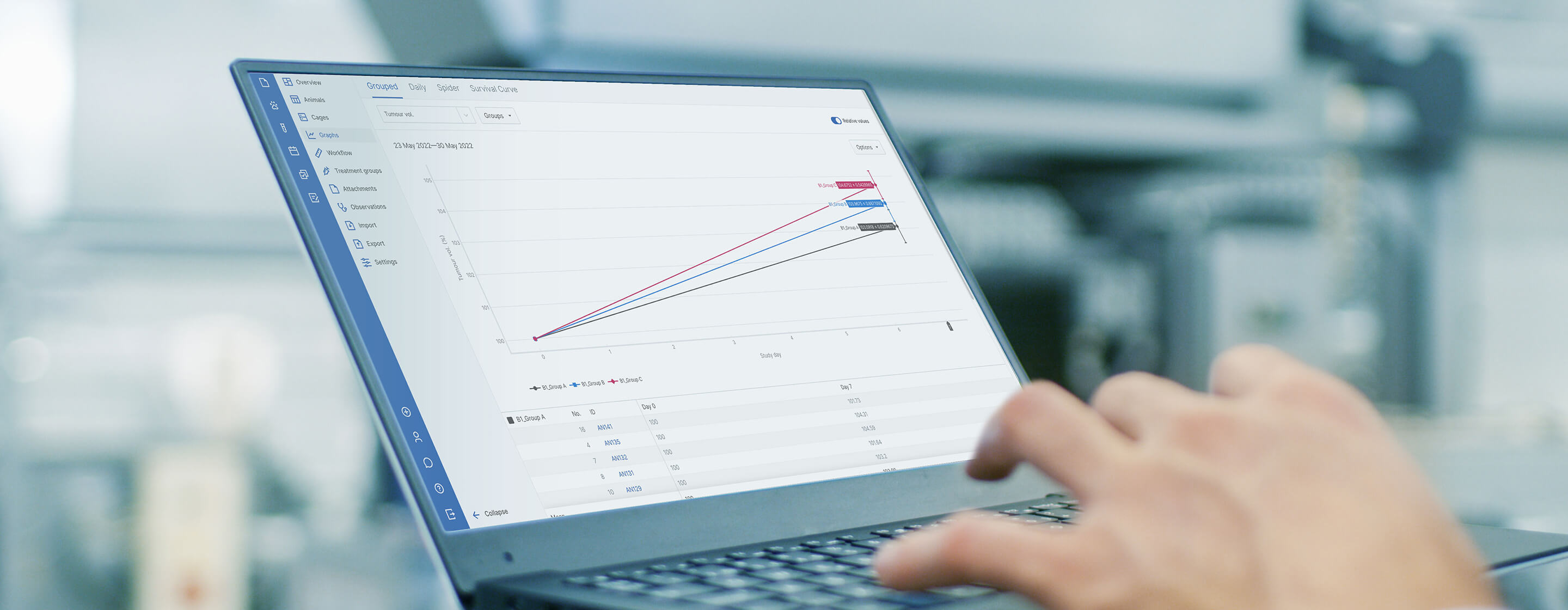Modernizing in vivo R&D programs

Last month I had the pleasure of sitting down with Catherine Souza, senior in vivo research associate at Servier, for a discussion on the challenges and opportunities facing the field of in vivo R&D. It was great to hear Catherine’s perspective from years of experience in the in vivo setting. Here were 3 things that stood out to me, and resonated from my own years of research experience in the vivarium:
In vivo research is dynamic - Something is happening at every moment. Catherine’s team is running up to a dozen studies in parallel at times, each with 10’s-100’s of animals involved, multiple time points, and so forth. The unpredictable often happens, and R&D teams need to have systems in place to account for this.
In vivo data collection can be tedious - Every study requires thousands of data points acquired from balances, calipers, and other devices and observations. Modern R&D teams need a way to thoughtfully and accurately capture this data, otherwise mistakes and transcription errors can impinge on the validity of the study.
Software should be an accelerant, but often it can be a drag - Catherine shared her journey through several different technological approaches to in vivo data management, including spreadsheets and in vivo software applications, with frustration in the user experience and inability to align with their study frameworks.
This last point is near and dear to me, as I’ve spent the last 5 years building software designed to meet the needs of in vivo scientists. We set out to build a platform that promoted accurate data collection, automated routine tasks in the lab, and was built on a modern cloud platform with an engaging user experience. Our hope was that we could give scientists better tools to help manage the complexity and intricacy of in vivo studies that Catherine spoke about, and as a result, help the industry accelerate through these critical phases of drug development.
Let’s back out for a second and understand why this is such an important problem to solve. The biopharmaceutical industry has been challenged by the overall efficiency of the R&D process:
Only about 12 percent of drugs entering clinical trials are ultimately approved for introduction by the FDA.[1]
The prevalence of irreproducible preclinical data exceeds 50 percent and costs more than $28 billion in the U.S. alone.[2]
Irreproducibility of animal studies data, in particular, exceeds 89 percent.[2]
While there are many confounding factors to these challenges, we felt that it should be possible to improve how in vivo studies were designed and managed. This in turn should help biopharmaceutical companies be more effective and efficient during these phases of drug development. The product we built, Benchling Studies, is now being used by companies like Servier to promote accurate in-life data collection and drive collaboration across teams and sites.
I’d encourage you to catch the full conversation with Catherine. On the same webinar, our own Dr. Wendy Fernandez Ochoa, Scientific Solutions Consultant at Benchling, also delivered a full solution demonstration of Studies, highlighting core capabilities for colony management, study design, in life data collection, and sample transfer within the Benchling R&D Cloud.
You can find the on-demand webinar here. I hope you enjoy! And if you’d like to compare notes on your own experience in the in vivo lab, please reach out any time.
References
Research and Development in the Pharmaceutical Industry. https://www.cbo.gov/publication/57126
Source: The Economics of Reproducibility in Preclinical Research. Leonard P. Freedman, Iain M. Cockburn, Timothy S. Simcoe (View)
Powering breakthroughs for over 1,300 biotechnology companies, from startups to Fortune 500s
